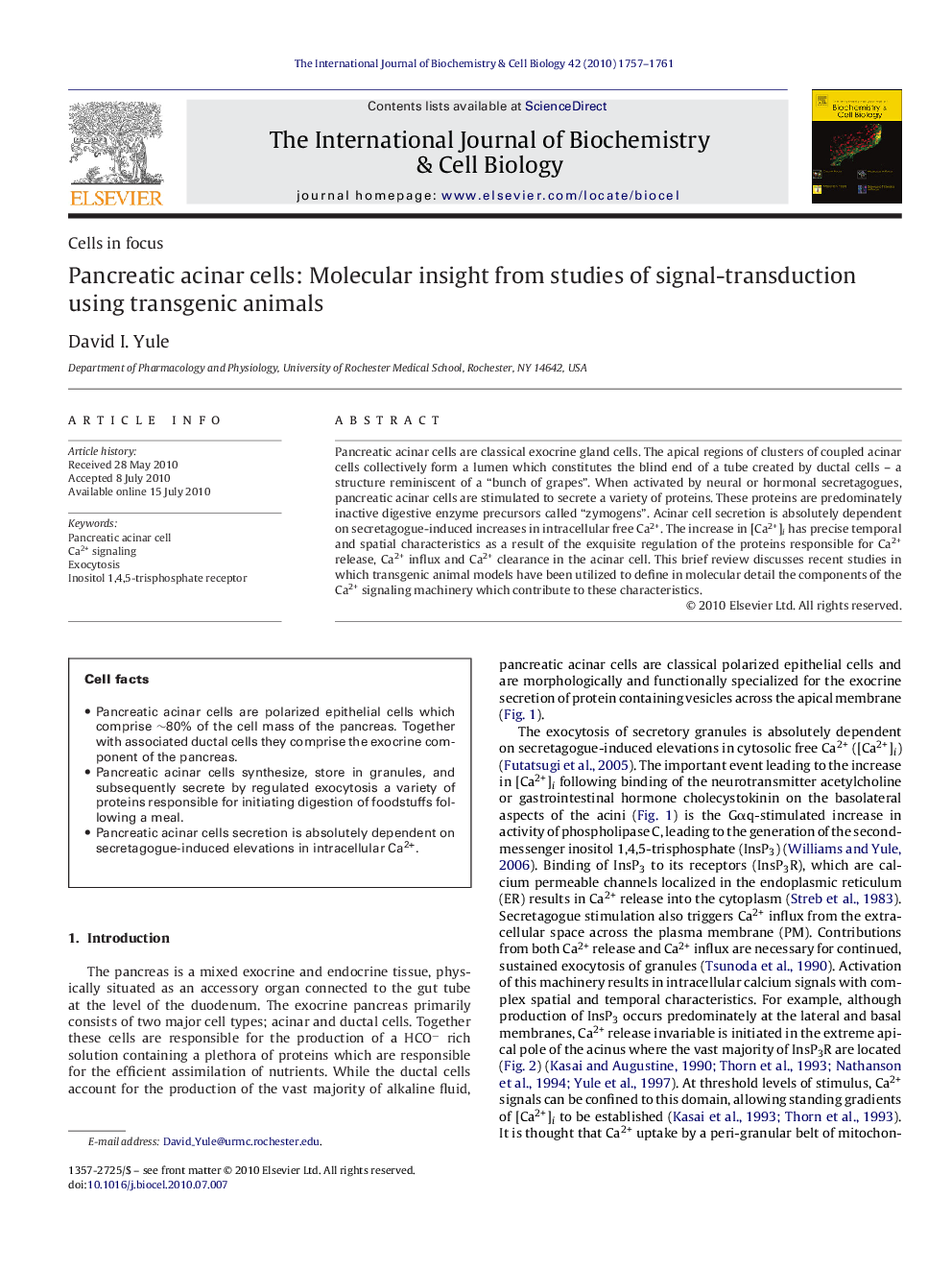| کد مقاله | کد نشریه | سال انتشار | مقاله انگلیسی | نسخه تمام متن |
|---|---|---|---|---|
| 1984295 | 1539936 | 2010 | 5 صفحه PDF | دانلود رایگان |

Pancreatic acinar cells are classical exocrine gland cells. The apical regions of clusters of coupled acinar cells collectively form a lumen which constitutes the blind end of a tube created by ductal cells – a structure reminiscent of a “bunch of grapes”. When activated by neural or hormonal secretagogues, pancreatic acinar cells are stimulated to secrete a variety of proteins. These proteins are predominately inactive digestive enzyme precursors called “zymogens”. Acinar cell secretion is absolutely dependent on secretagogue-induced increases in intracellular free Ca2+. The increase in [Ca2+]i has precise temporal and spatial characteristics as a result of the exquisite regulation of the proteins responsible for Ca2+ release, Ca2+ influx and Ca2+ clearance in the acinar cell. This brief review discusses recent studies in which transgenic animal models have been utilized to define in molecular detail the components of the Ca2+ signaling machinery which contribute to these characteristics.
Journal: The International Journal of Biochemistry & Cell Biology - Volume 42, Issue 11, November 2010, Pages 1757–1761